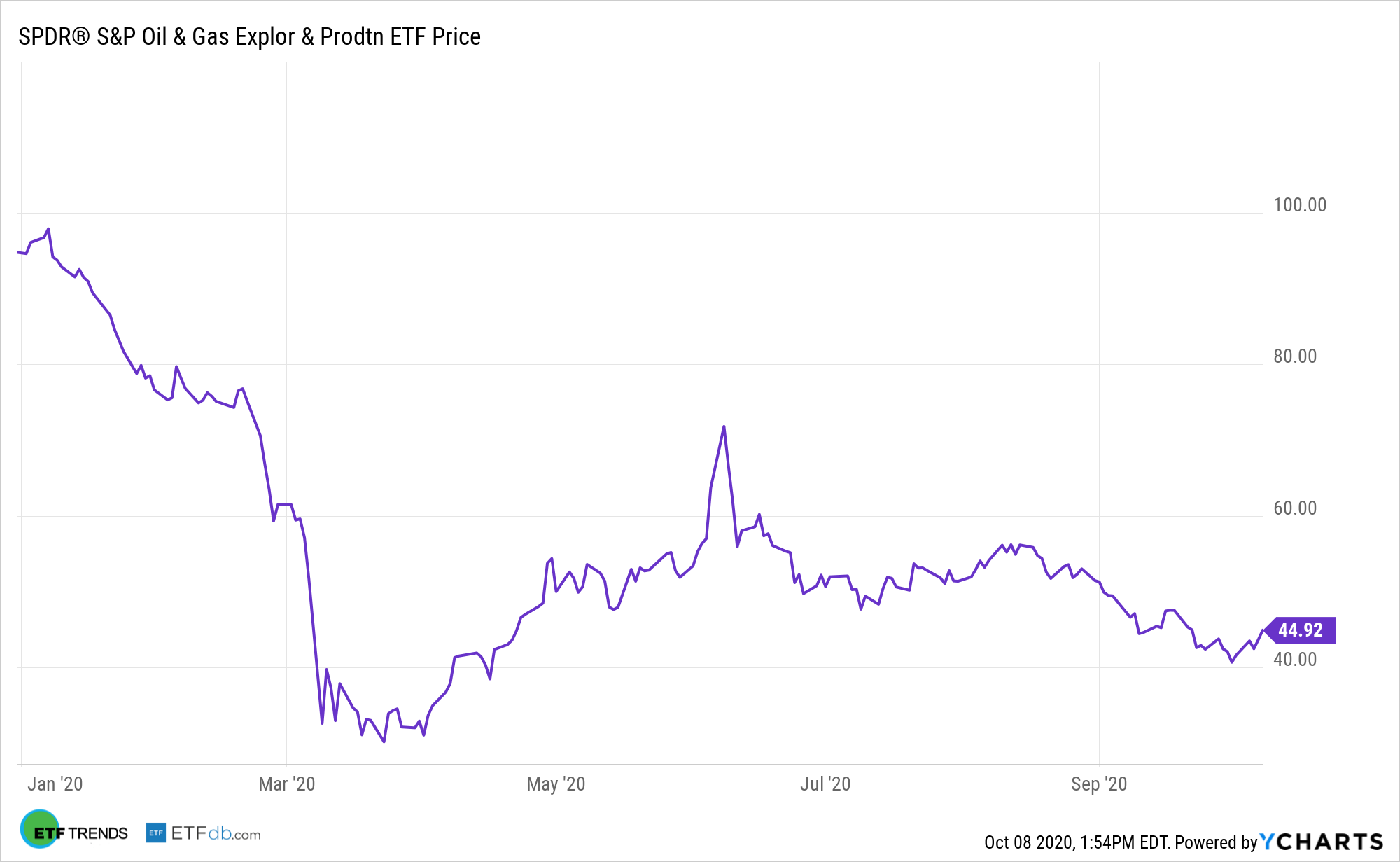Crude oil is ramping up once again this week as oil futures and ETFs continue to move higher on Thursday, as analysts suggest that the crude market may have already priced in the sluggish global demand recovery, and the broadening economic uncertainties about the economy as the coronavirus continues to ravage the globe.
West Texas Intermediate crude oil futures are 2.85% higher and climbing on Thursday, trading above $41 a barrel once again, after a decline to the mid $36 per barrel handle last week.
The move higher is bolstering crude ETFs like the The United States Oil Fund (USO), which rallied 1.97%, while the SPDR S&P Oil & Gas Exploration & Production ETF (XOP) advanced over 2%.
However, while crude has bounced significantly from its April lows, where the commodity reached negative territory for the first time, analysts for the most part feel that oil prices could stabilize around the current $40 a barrel level for the remainder of the year, as coronavirus concerns, a surplus of global inventories, and a stymied recovery in oil demand as the U.S. driving season completes could put a lid on price expansion.

Since prices may be stabilizing, the good news is that bearish fundamentals and problems that could result from a second wave of Covid-19 infections is still unlikely to result in a crash in black gold again, like it did in April when oil demand collapsed by 20 percent, according to Michael Lynch, an expert on petroleum economics and energy policy, in Forbes.
While crude may be balanced for the time being however, Chevron is requesting that its employees to reapply for jobs, Reuters has reported, citing unnamed sources in the know, in an effort to limit the company’s staff by as much as 15 percent worldwide.
“This is a difficult decision, and we do not make it lightly,” Chevron said in a statement at the time. The company employed nearly 50,000 as of the end of 2019. As of October 2020, this was down to 45,000. It is unclear how the job cuts will affect each location and business segment, Chevron added.
The oil major reported a net loss of $8.3 billion for Q2, after booking huge impairment charges that were driven by the industry and pandemic crisis. The net loss includes impairments and other net charges of US$1.8 billion, mostly related negative revisions to Chevron’s commodity price projection.
“Given the uncertainties associated with economic recovery, and ample oil and gas supplies, we made a downward revision to our commodity price outlook which resulted in asset impairments and other charges,” said Michael Wirth, Chevron’s chairman of the board and CEO, at the time.
For more market trends, visit ETF Trends.
